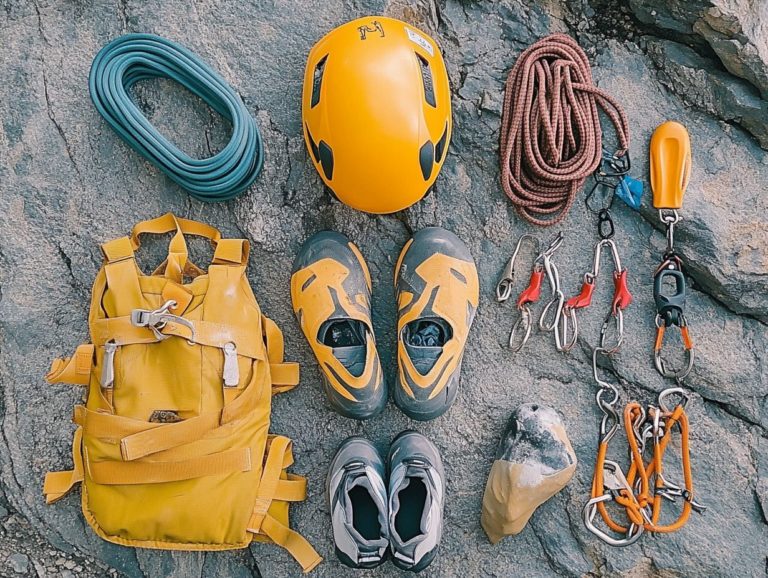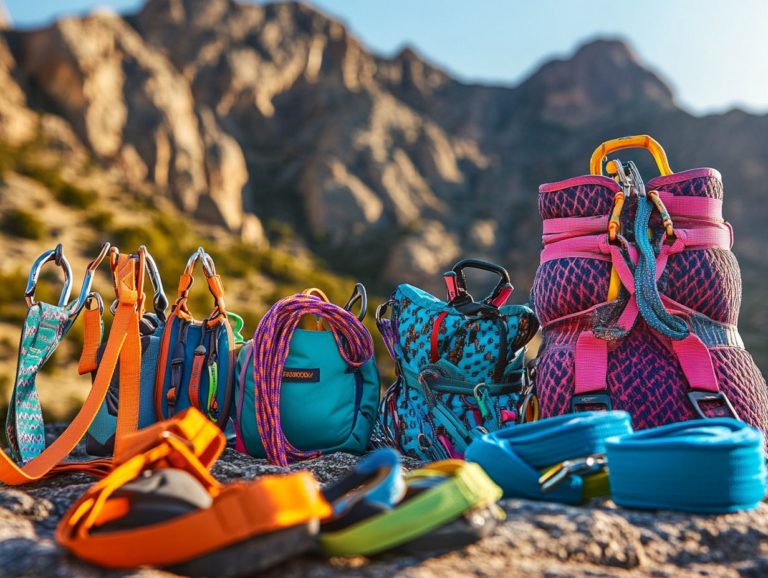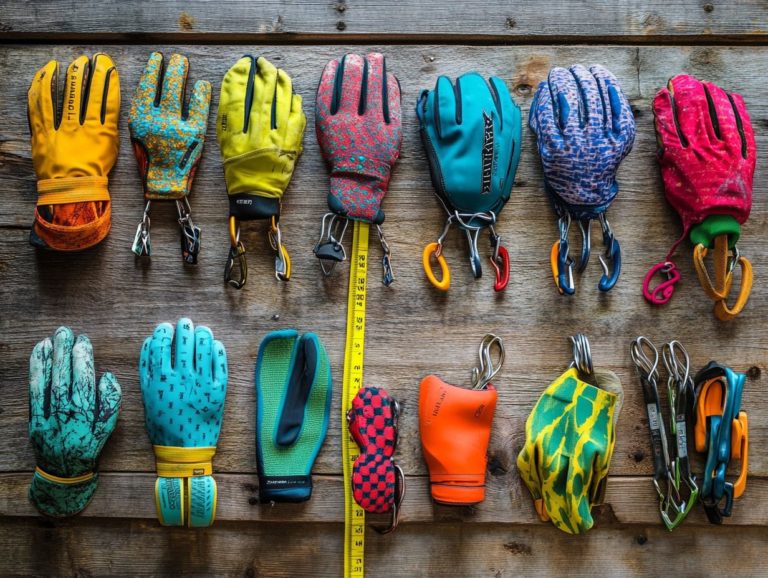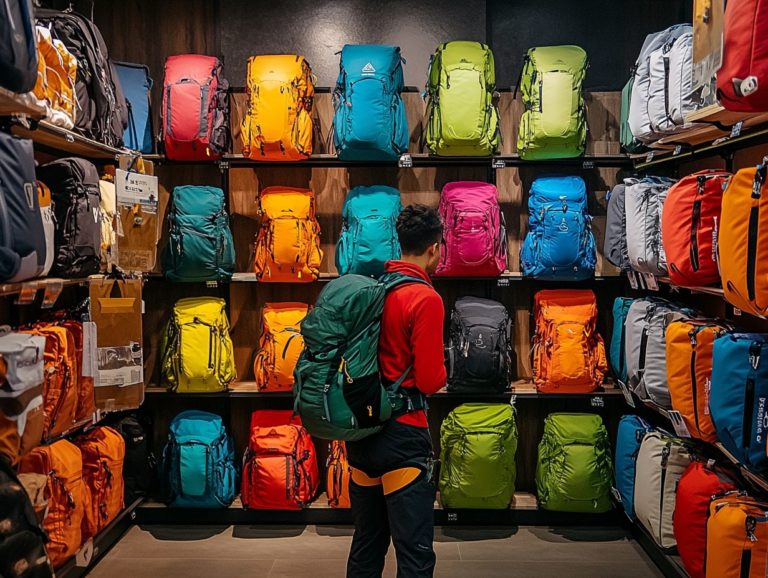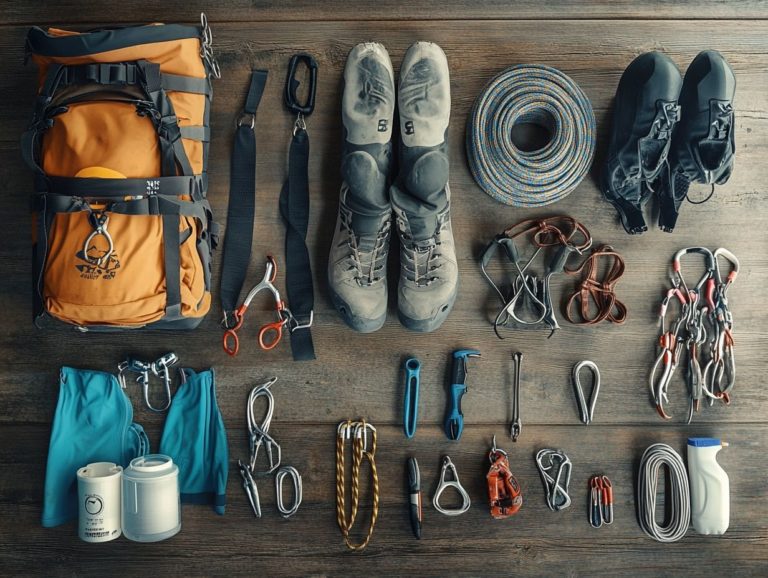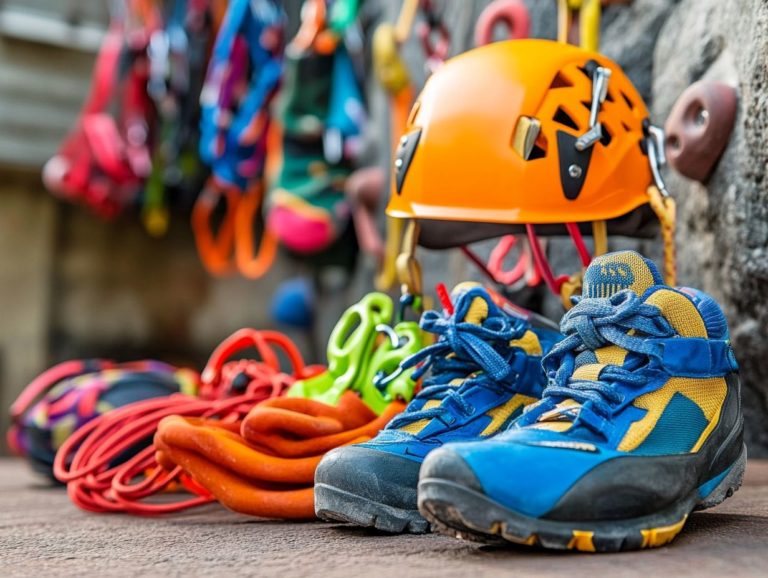How to Pack Climbing Gear for Travel
Packing for a climbing adventure is more than just tossing gear into a bag. It s a meticulous process that prioritizes safety and readiness for the outdoors.
This guide delves into the essentials of proper packing, covering everything from indispensable climbing gear to choosing the ideal backpack.
It also provides effective packing techniques and strategies for navigating different modes of transportation.
Whether you re an experienced climber or just starting out, mastering the art of packing will elevate your climbing experience.
Contents
Key Takeaways to Elevate Your Climbing Adventure:
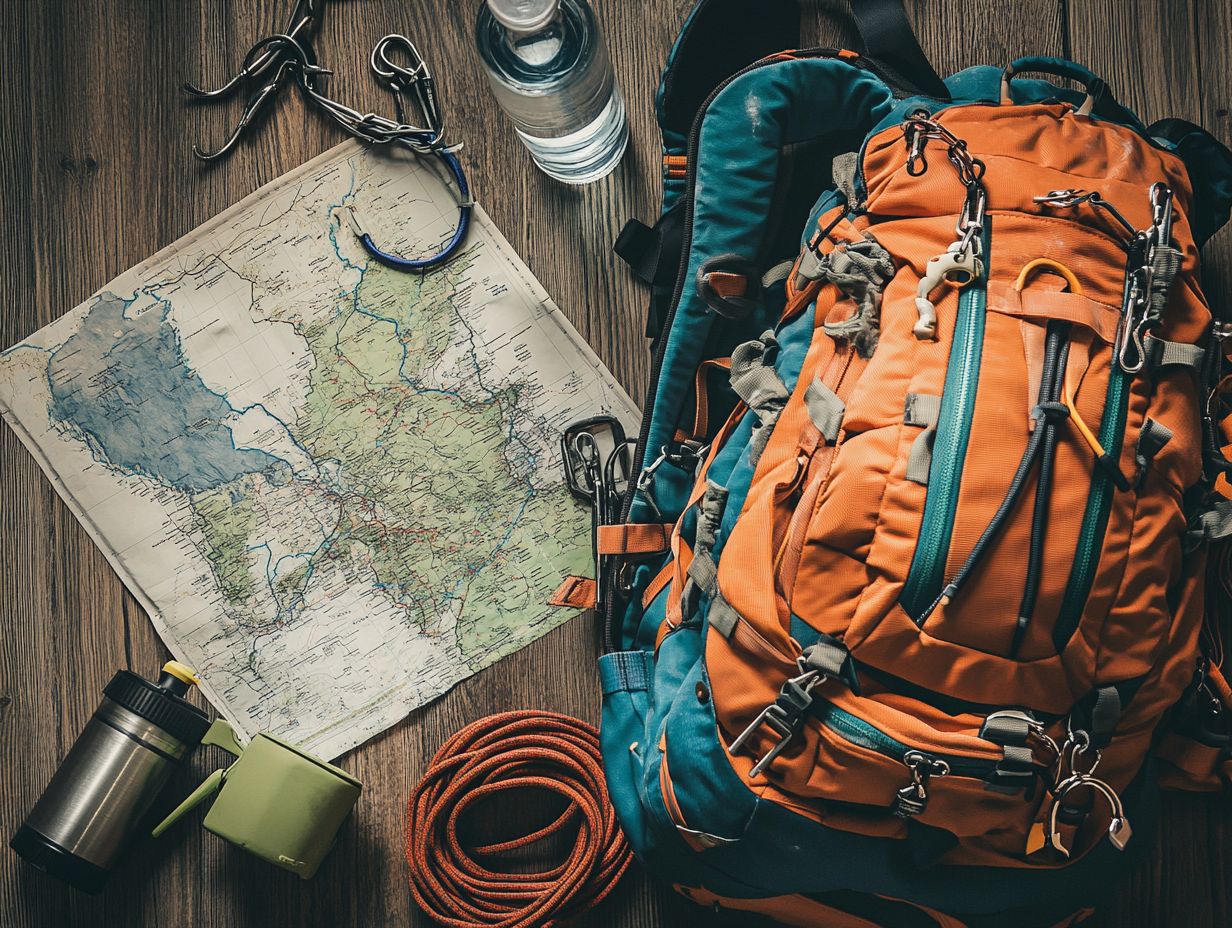
- Proper packing ensures safety and efficiency on your climbing trip.
- Must-have essentials for any climbing trip include a harness, rope, and protective gear.
- When choosing a backpack, consider factors such as size, weight distribution, and comfort.
Why Proper Packing is Important
Proper packing for your climbing trips is essential for maximizing efficiency and ensuring a seamless experience, especially when you re facing challenging routes like climbs that involve multiple sections in places such as Boulder or the Red River Gorge.
A well-thought-out packing strategy ensures that your essential items are easily accessible, allowing for quick starts and minimizing the risk of leaving behind crucial gear.
Smart packing keeps you safe and boosts your performance, making it essential for reaching the summit!
Essential Gear for Climbing
When you’re gearing up for a climbing expedition, understanding which essential gear to pack can profoundly influence your experience, determining whether you find success or face challenges along the way.
Items like the Echo Hoody from Patagonia, climbing shoes from La Sportiva, and a well-stocked first-aid kit are essential additions to your personal kit. Whether you re embarking on a winter mountaineering journey or a summer adventure, careful consideration of the clothing and equipment you choose is crucial.
Prioritize comfort and safety by selecting insulation layers and personal hygiene products that will support you throughout your climb.
Must-Have Items for Any Climbing Trip
Every climber understands that the right gear can make or break your adventure. Essential items like a reliable headlamp, a durable crag pack, and innovative packing tools such as the butterfly coil are crucial for any climbing trip.
These pieces not only streamline your packing process but also ensure you can quickly access critical items when needed.
Beyond the basics, investing in high-quality climbing shoes that fit perfectly and offer exceptional grip will elevate your stability on varied surfaces.
A well-stocked first-aid kit is essential; accidents can happen even to seasoned climbers, so being prepared for quick responses to injuries is vital.
Don t overlook the importance of a sturdy harness designed for both comfort and safety, as it ensures proper weight distribution during your ascents.
You might also consider swapping gear with fellow climbers, which fosters a sense of community and allows you to test different equipment without the financial commitment of buying something new.
Sharing insights on packing gear and recommendations can lead you to unique finds, ultimately enriching your climbing experience and making every ascent even more rewarding.
Choosing the Right Backpack
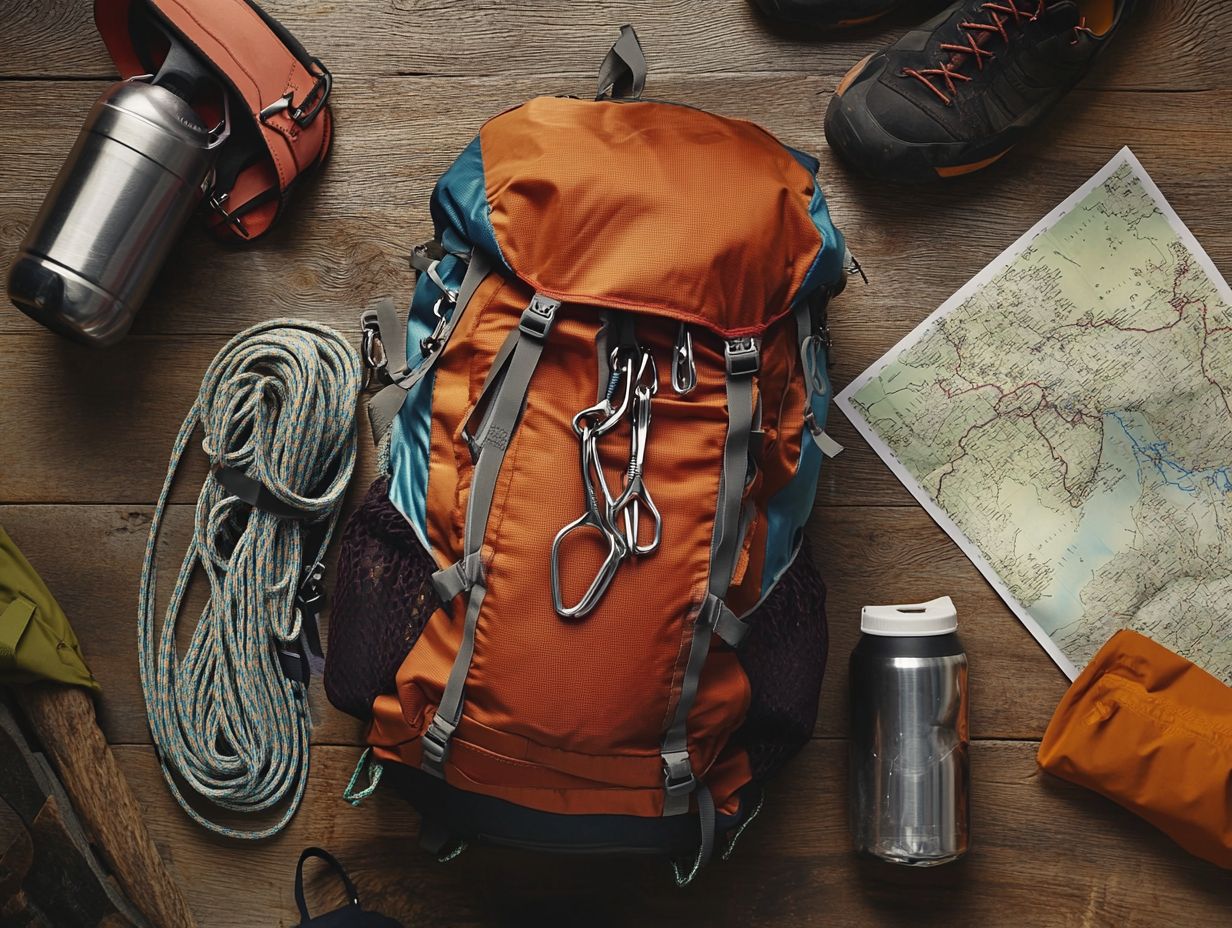
Choosing the perfect backpack for your climbing adventures is a crucial decision that can significantly influence both your experience and performance.
A thoughtfully designed crag pack or lightweight haul bag can transform the way you transport your climbing gear, making it efficient and comfortable. For more tips, check out this guide on how to pack your climbing gear efficiently.
As you evaluate your options, pay attention to factors like torso length, weight distribution, and hybrid opening styles. These considerations are essential to ensure that the backpack caters to the specific demands of your climbing excursions, whether you re conquering multi-pitch routes or enjoying day hikes at the base of the cliff.
Get ready for your next climbing adventure! Start packing your essentials today and conquer those peaks with confidence!
Factors to Consider when Selecting a Backpack
When selecting a climbing backpack, you should consider key factors like organization, ease of access to your gear, and durability. These elements can significantly shape your climbing experience.
Make sure the pack can accommodate essential items, such as an insulation layer and other gear necessary for varying weather conditions. This enhances your preparedness for any climbing adventure.
Proper organization is vital for you, allowing quick access to equipment like harnesses, carabiners, and ropes. The accessibility of these items can truly make or break crucial moments during your ascent.
The materials you choose, such as rip-resistant fabrics and reinforced seams, play a significant role in the overall durability and performance of your backpack. Innovative designs that incorporate ventilation systems designs that allow air flow and ergonomic shapes further enhance comfort.
These features ensure that your pack can withstand the rigors of climbing trails while keeping everything secure and within reach. This thoughtful approach to organization and construction ensures you are well-equipped for your journeys.
Packing Techniques for Climbing Gear
Mastering effective packing techniques is crucial for climbers who aim to optimize weight distribution and keep their gear organized for quick access.
Implementing strategies for efficient packing can revolutionize your preparation for trips. This method allows you to carry essential items and shared gear effortlessly, all while maintaining safety and convenience.
Efficient and Safe Ways to Pack Gear
Efficient and safe packing methods are essential for you as a climber. They elevate your organization and ensure that all your gear is secure and easily accessible.
Utilizing a well-structured packing list can guide you in your preparations and help you avoid overlooking critical items. By carefully categorizing your gear from harnesses and helmets to food and first aid supplies, you can streamline your packing process and ensure you follow the top tips for caring for your climbing gear.
For instance, having a checklist of essentials like ropes, carabiners, and water bottles helps you see exactly what you pack well before your departure date. This approach not only reduces the risk of forgetting vital equipment but also builds your confidence, ensuring you’re ready for any adventure.
Store items compactly in your backpack. This ensures quick access during your climb and boosts both safety and efficiency on the trail.
Tips for Packing Gear in Different Modes of Transportation
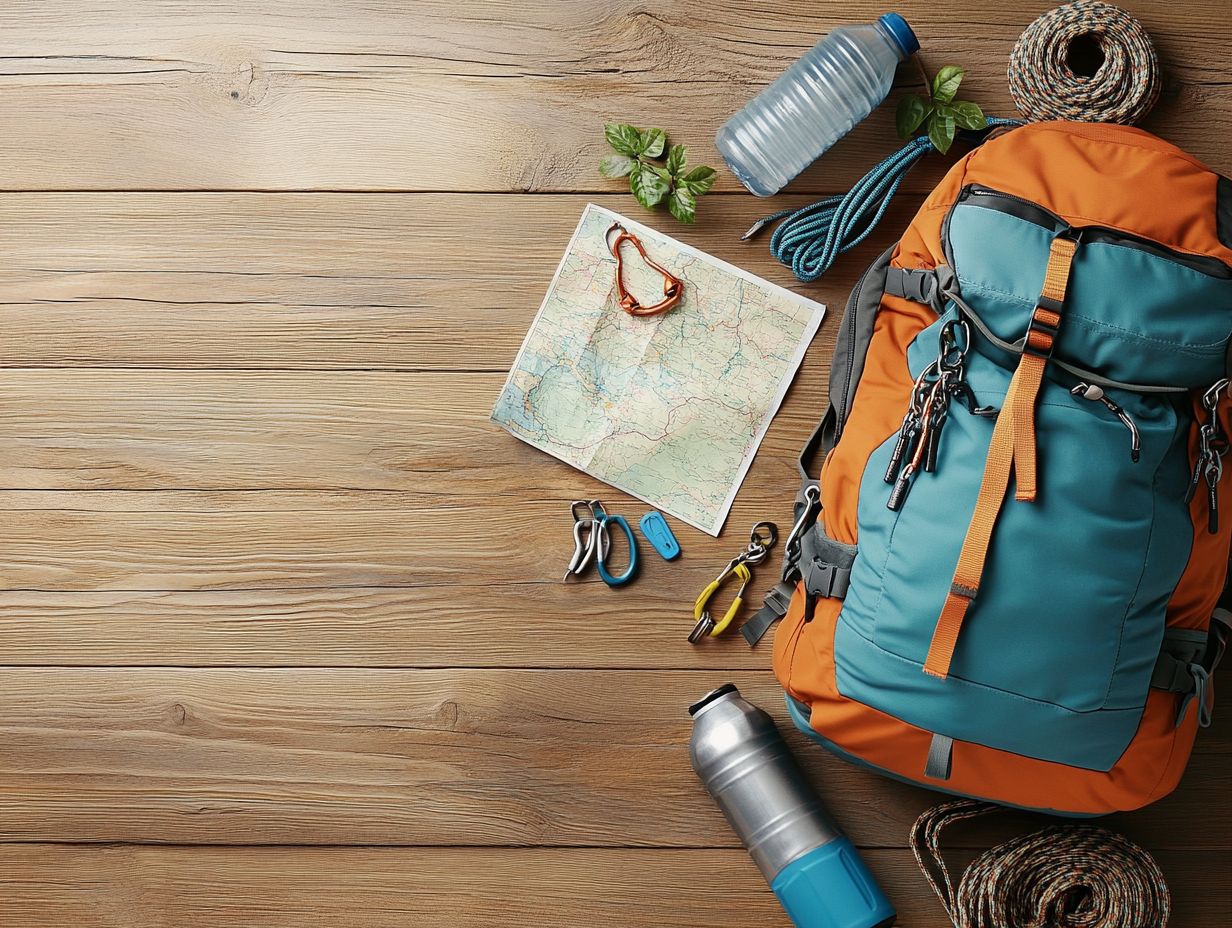
Packing gear for your climbing trips is a detailed process that varies significantly based on your mode of transportation. Whether you’re traversing the open road in a car, soaring through the skies by plane, or navigating the rails by train, each method demands specific strategies to keep your climbing gear organized and intact.
Mastering the art of weight distribution and optimizing space in your vehicle or luggage is essential. It ensures you arrive fully prepared and primed for your next adventure.
Strategies for Car, Plane, and Train Travel
Each mode of transportation brings its own challenges and opportunities for packing. It’s crucial to adopt effective strategies tailored to car, plane, and train travel. Hitting the road in a car allows for flexibility and the ability to pack bulkier gear. However, when it comes to plane travel, meticulous packing of your climbing gear is necessary to comply with airline regulations. Train travel, on the other hand, demands smart organization to navigate space constraints efficiently.
For your car journeys, consider using cargo boxes or roof racks to maximize space while maintaining easy access to your gear. If air travel is in your plans, neatly stow away items like harnesses and ropes, often employing compression sacks; these are bags that compress your gear to save space and protect your equipment from damage. Additionally, if you’re planning a hike, it’s important to know how to pack a backpack for hiking. When traveling by train, compact packing is your friend; opt for versatile bags that can double as daypacks.
By thoughtfully considering the nature of your gear and the limitations of each travel mode, you can sidestep chaotic packing and keep your equipment secure. This ensures a seamless transition from one adventure to the next.
Frequently Asked Questions
What is the best way to pack climbing gear for travel?
The best way to pack climbing gear for travel is to first make a list of all the necessary items. Then, lay out your gear and organize it by category (ropes, harnesses, shoes, etc.). Finally, use a pack specifically designed for climbing gear to ensure everything fits securely and is easily accessible.
Should I pack my climbing gear in a checked bag or carry-on?
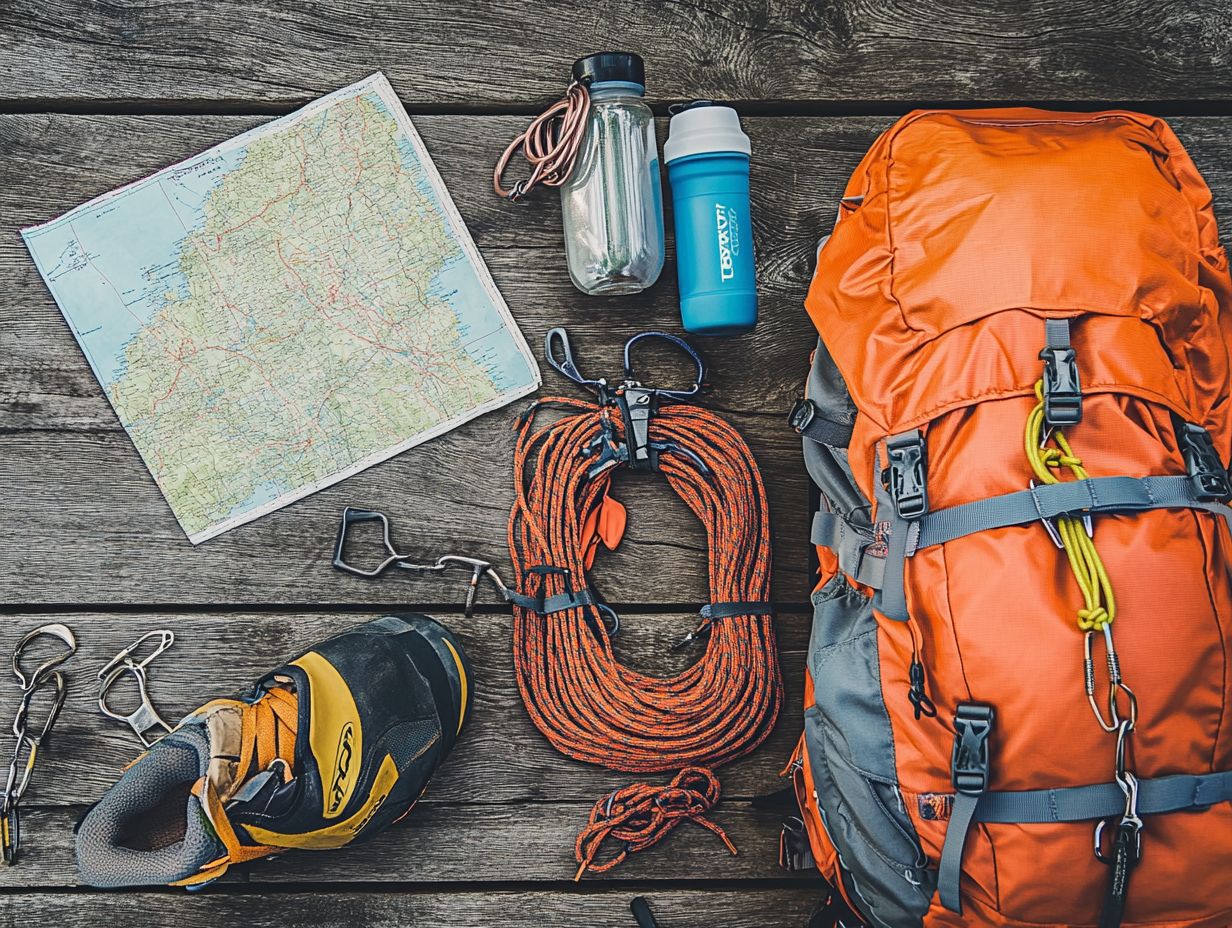
It is recommended to pack your climbing gear in a carry-on bag if possible. This allows you to keep it with you at all times, avoiding the risk of loss or damage in checked luggage. However, be sure to check your airline’s policies regarding traveling with climbing gear.
How do I pack my ropes for travel?
To pack your ropes for travel, coil them carefully to avoid tangling. Use a rope bag or stuff sack to keep them contained and protected. Don’t forget to check the weight restrictions for your airline, as ropes can significantly add to your luggage’s weight. Lightweight and efficient packing is crucial for climbing trips, especially in the summer months.
Can I pack my climbing shoes in my checked luggage?
It is not recommended to pack your climbing shoes in checked luggage since they are delicate and can easily get damaged. Instead, pack them in your carry-on bag or use a separate shoe bag for protection. Utilizing durable fabric in your packing list can help protect clothing items and personal gear, ensuring efficient packing for your climbing adventures.
How should I pack my climbing harness?
To pack your climbing harness, first untangle any straps and lay it flat. Then, fold it in half and tuck the leg loops inside the waist belt.
Finally, place it in a special gear bag or wrap it in a soft item, like a jacket, to protect it from sharp objects in your luggage. Adding an insulation layer or bug cover helps during winter climbs or camping.
What should I do with my climbing helmet when traveling?
The best option is to wear your climbing helmet or attach it to your carry-on bag. If that’s not possible, pack it in checked luggage, wrapped in clothing or bubble wrap for protection.
Keep your first-aid kit handy for quick access in emergencies safety first! Consider carrying a headlamp for safety during night climbs.

